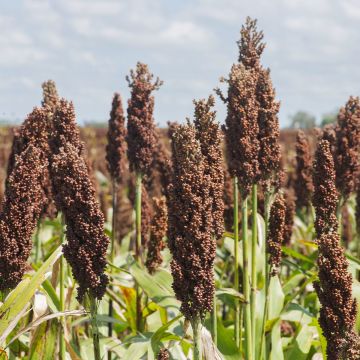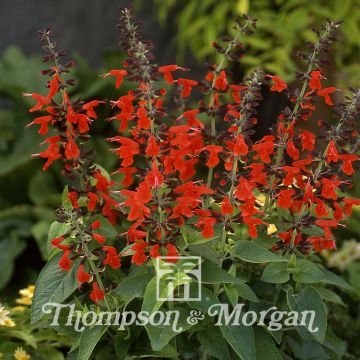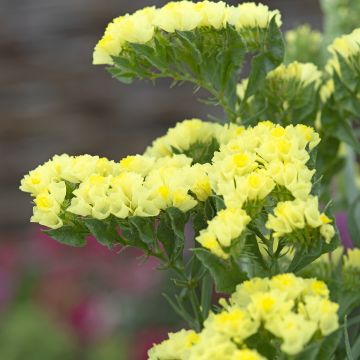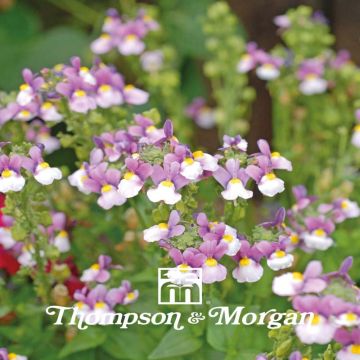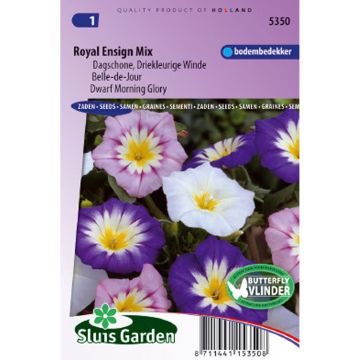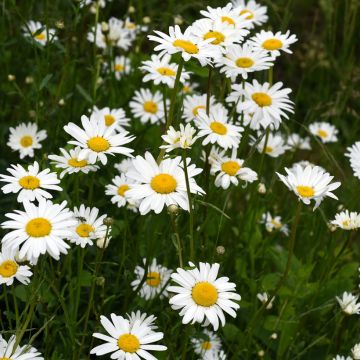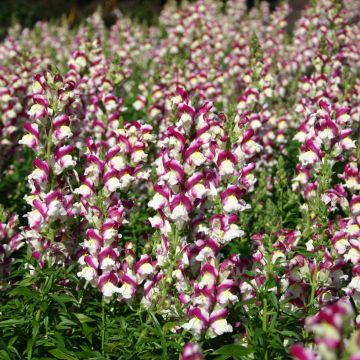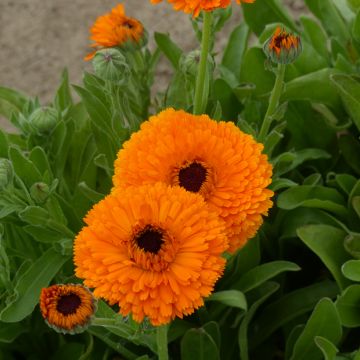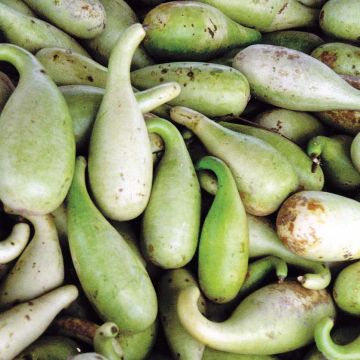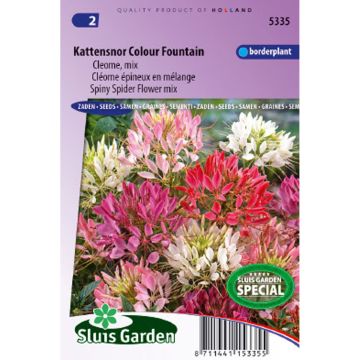

Primula Candelabra Hybrids 1
Primula candelabra Hybrids
Primula candelabra Hybrids
Candelabra Primrose
This plant carries a 6 months recovery warranty
More information
We guarantee the quality of our plants for a full growing cycle, and will replace at our expense any plant that fails to recover under normal climatic and planting conditions.
Seed-only orders are dispatched by sealed envelope. The delivery charge for seed-only orders is €3.90.
Does this plant fit my garden?
Set up your Plantfit profile →
Description
The Primula candelabra Hybrids, also known as mixed candelabra primroses, bring together fascinating hybrids. They are adorned from late spring to early summer with erect flowering stems with various colourful flowers arranged in whorls. These hardy perennial plants thrive in sun or even shade in cool to moist soil. They are perfect for bordering water features or in damp woodland areas.
The candelabra primrose, also known as Primula section Candelabra, is a relatively unknown plant in the primrose family and is rarely used in gardens. These herbaceous perennial plants originate from wet and wooded areas in China, Burma, and even Bhutan, depending on the species, which are numerous in this section (including P. beesiana, P. bulleyana, P. burmanica, or P. chungensis). Our selection brings together various horticultural or spontaneous hybrids from these plants. They form rosettes from which flowering stems emerge in spring, reaching heights of 30 to 60 cm (12 to 24in), with a spread of 30 cm (12in). The foliage, lanceolate and evergreen to semi-evergreen, is a vibrant green, with leaves measuring 10 to 30 cm (4 to 12in) in length and having a wavy texture. The flowering takes place from May to June in the form of tall vertical stems producing several tiers of flowers. Depending on the hybrids, the flowers are rounded or flattened, measuring 1 to 2 cm (0 to 1in) in diameter, and come in warm colours such as pink, brick red, yellow, orange, or even carmine.
Report an error about the product description
Flowering
Foliage
Plant habit
Botanical data
Primula
candelabra
Hybrids
Primulaceae
Candelabra Primrose
Cultivar or hybrid
Other Thompson and Morgan seeds
Planting and care
Sowing:
The seeds of candelabra primroses germinate at 15-20 ° C; higher temperatures can hinder germination. Sow on the surface of a moist, well-drained special sowing compost. Cover with a pinch of vermiculite without completely covering the seeds. Place the whole in a mini-greenhouse or a transparent plastic bag in a shaded area. Keep the compost moist but not waterlogged. Germination usually takes 10 to 30 days. Once some seeds have emerged, sprinkle the compost with a thin layer of sieved compost to facilitate the rooting of the seedlings.
Transplant the young plants into 8 cm (3in) pots when they are large enough to handle. Grow them in a cooler environment, giving them plenty of water—plant outside, with a spacing of 23cm (9in).
Cultivation:
Candelabra primroses appreciate relatively moist to marshy soils; a location near water suits them perfectly. Ideally, plant them in the shade, in a cool understory. Ideally, the soil will be deep, humus-rich, relatively neutral and slightly acidic, even peaty. You can plant them in cooler regions in full sun, but the soil must be kept moist throughout the year. Growing these species in pots and containers, in a mixture of compost and peat, kept wet throughout the year is also possible. Place the pot in the shade, exposed to the East or North.
Remove the foliage and faded flower stalks once a year, and divide clumps that have become too large. It is recommended to repot potted plants every two years to renew the substrate.
Sowing period
Intended location
This item has not been reviewed yet - be the first to leave a review about it.
Flower seeds
Haven't found what you were looking for?
Hardiness is the lowest winter temperature a plant can endure without suffering serious damage or even dying. However, hardiness is affected by location (a sheltered area, such as a patio), protection (winter cover) and soil type (hardiness is improved by well-drained soil).

Photo Sharing Terms & Conditions
In order to encourage gardeners to interact and share their experiences, Promesse de fleurs offers various media enabling content to be uploaded onto its Site - in particular via the ‘Photo sharing’ module.
The User agrees to refrain from:
- Posting any content that is illegal, prejudicial, insulting, racist, inciteful to hatred, revisionist, contrary to public decency, that infringes on privacy or on the privacy rights of third parties, in particular the publicity rights of persons and goods, intellectual property rights, or the right to privacy.
- Submitting content on behalf of a third party;
- Impersonate the identity of a third party and/or publish any personal information about a third party;
In general, the User undertakes to refrain from any unethical behaviour.
All Content (in particular text, comments, files, images, photos, videos, creative works, etc.), which may be subject to property or intellectual property rights, image or other private rights, shall remain the property of the User, subject to the limited rights granted by the terms of the licence granted by Promesse de fleurs as stated below. Users are at liberty to publish or not to publish such Content on the Site, notably via the ‘Photo Sharing’ facility, and accept that this Content shall be made public and freely accessible, notably on the Internet.
Users further acknowledge, undertake to have ,and guarantee that they hold all necessary rights and permissions to publish such material on the Site, in particular with regard to the legislation in force pertaining to any privacy, property, intellectual property, image, or contractual rights, or rights of any other nature. By publishing such Content on the Site, Users acknowledge accepting full liability as publishers of the Content within the meaning of the law, and grant Promesse de fleurs, free of charge, an inclusive, worldwide licence for the said Content for the entire duration of its publication, including all reproduction, representation, up/downloading, displaying, performing, transmission, and storage rights.
Users also grant permission for their name to be linked to the Content and accept that this link may not always be made available.
By engaging in posting material, Users consent to their Content becoming automatically accessible on the Internet, in particular on other sites and/or blogs and/or web pages of the Promesse de fleurs site, including in particular social pages and the Promesse de fleurs catalogue.
Users may secure the removal of entrusted content free of charge by issuing a simple request via our contact form.
The flowering period indicated on our website applies to countries and regions located in USDA zone 8 (France, the United Kingdom, Ireland, the Netherlands, etc.)
It will vary according to where you live:
- In zones 9 to 10 (Italy, Spain, Greece, etc.), flowering will occur about 2 to 4 weeks earlier.
- In zones 6 to 7 (Germany, Poland, Slovenia, and lower mountainous regions), flowering will be delayed by 2 to 3 weeks.
- In zone 5 (Central Europe, Scandinavia), blooming will be delayed by 3 to 5 weeks.
In temperate climates, pruning of spring-flowering shrubs (forsythia, spireas, etc.) should be done just after flowering.
Pruning of summer-flowering shrubs (Indian Lilac, Perovskia, etc.) can be done in winter or spring.
In cold regions as well as with frost-sensitive plants, avoid pruning too early when severe frosts may still occur.
The planting period indicated on our website applies to countries and regions located in USDA zone 8 (France, United Kingdom, Ireland, Netherlands).
It will vary according to where you live:
- In Mediterranean zones (Marseille, Madrid, Milan, etc.), autumn and winter are the best planting periods.
- In continental zones (Strasbourg, Munich, Vienna, etc.), delay planting by 2 to 3 weeks in spring and bring it forward by 2 to 4 weeks in autumn.
- In mountainous regions (the Alps, Pyrenees, Carpathians, etc.), it is best to plant in late spring (May-June) or late summer (August-September).
The harvesting period indicated on our website applies to countries and regions in USDA zone 8 (France, England, Ireland, the Netherlands).
In colder areas (Scandinavia, Poland, Austria...) fruit and vegetable harvests are likely to be delayed by 3-4 weeks.
In warmer areas (Italy, Spain, Greece, etc.), harvesting will probably take place earlier, depending on weather conditions.
The sowing periods indicated on our website apply to countries and regions within USDA Zone 8 (France, UK, Ireland, Netherlands).
In colder areas (Scandinavia, Poland, Austria...), delay any outdoor sowing by 3-4 weeks, or sow under glass.
In warmer climes (Italy, Spain, Greece, etc.), bring outdoor sowing forward by a few weeks.



































